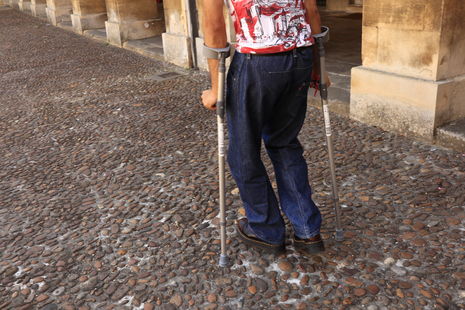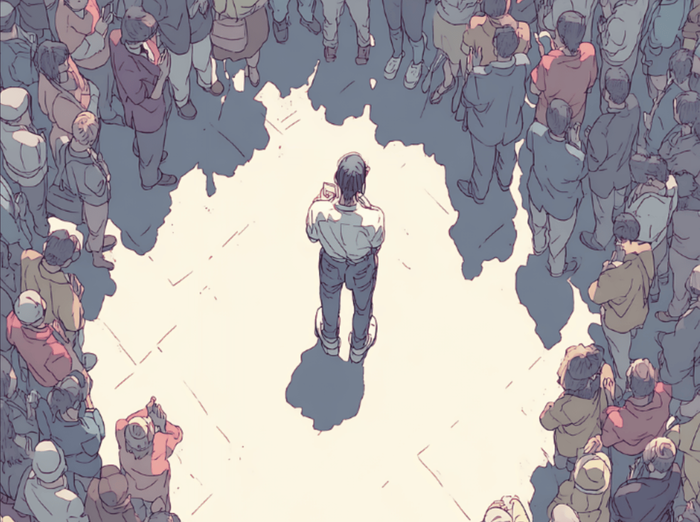Learning to live with injury at Cambridge
Cambridge contributes to vital research on ACL injuries in women’s sport, but Eve Nicholls investigates how injured students face challenges on college grounds

Charlotte was mid-air and mid-rehearsal with the Cambridge University Dance Competition team when she injured her knee. By the time she heard the distinctive ‘pop’, it was too late: she knew her ACL had gone, and with it her chance to compete for the next two years.
The high volume and intensity of Cambridge sport, with students participating in over 75 sports at the university level (supplemented by numerous college teams), means that injuries like Charlotte’s are all too common. Whilst university statistics on injury incidence are limited, research suggests that female athletes are between two and eight times more likely to tear their ACL. Speaking to researchers and injured students here in Cambridge, it is clear that this gender imbalance is also evident within the university itself.
“female athletes are between two and eight times more likely to tear their ACL”
This is something that CUAFC’s former president and current Blues captain Lara Branston has picked up on: “they [ACL injuries] are so much more prevalent in women’s sport than men’s – particularly in football”. The high incidence of injury is compounded by its lengthy recovery period (surgery recovery can take up to 12 months), with Lara recounting the experience of one player forced to intermit as a result. As teams seek to recruit and retain female players, the prevention and management of ACL and other knee injuries are areas that require further research.
One student conducting such research is Holly Davis, a final-year medic at Sidney Sussex. Last summer, she worked on a pilot study of soft tissue knee injuries in female university athletes, surveying Cambridge University sports teams to examine the nature and management of injuries. The study confirmed that the most frequent knee injuries were ACL-related, at 44% of all injuries. Most interesting, however, was the study’s examination of related social attitudes, highlighting a deficit of engagement in injury prevention programmes despite widespread awareness of their importance. When speaking to Holly, she stressed the need for more research focused on such “implicit biases” both in athletes and surgeons, to understand why female athletes tend to be given more conservative treatment plans compared to their male counterparts.
It is perhaps unsurprising to see Cambridge pioneer this research area, but work remains to be done, particularly in terms of the university’s support for individual injured students.
“I was stuck in my room quite a bit because Ubers are so expensive”
For Charlotte, keeping up with exam preparation amidst surgery and recovery was her biggest concern, a struggle that she recounts “caused me a lot of anxiety”. Charlotte’s experience of injury left her reflecting on how the Cambridge environment “is just not set up for people to have ‘off’ days or weeks”. Through her tutor, Charlotte was able to submit an ‘Exam Warning’ on CamSIS. This little-known mechanism can be used to inform the EAMC (Examination, Access and Mitigation Committee) that you have experienced mitigating circumstances during the examination period, thereby easing the process of applying for an examination allowance later on. Although Charlotte didn’t end up applying for an exam allowance, having the warning in place helped to ease her stress. Increased awareness and clarity around the examination process during times of poor health is still needed.
Cambridge’s problem with injured students is not simply cultural – it is also physical. Cobbled streets hardly provide the most even ground for crutches and wheelchairs, and medieval college buildings have an unsurprising shortage of lifts. Varsity, in conversation with disabled activists and students, has demonstrated how “our built environment can be a violent place”. This inaccessibility is also a crucial issue for injured students.
While some benefit from college funds and grants towards transport costs, others, like second-year Tabby, miss out. After stress fracturing both feet, Tabby recounts, “I was stuck in my room quite a bit because Ubers are so expensive”. She was fortunate to be relocated to a ground-floor room in college following her injury, but such a move is not always guaranteed. In comparison, first-year Julia recounts the experiences of one friend who, having fractured her ankle, benefited from college-subsidised Ubers to Sidge. After her own ACL surgery, Julia is rightly cautious about “getting jostled about” when going out in the evening, although what struck her most pre-op was having to swap out her formal heels for trainers.
Injured students at Cambridge face struggle against an unsympathetic workload, obstructive physical landscape, and disparity in college provisions for student support. As university research rightly focuses on the reasons for (and prevention of) gendered imbalance in injury, it must provide much-needed practical and academic support for its students. There is more to be done on the ground – and the track, field and dance stages too.
 News / SU stops offering student discounts8 January 2026
News / SU stops offering student discounts8 January 2026 Comment / Plastic pubs: the problem with Cambridge alehouses 5 January 2026
Comment / Plastic pubs: the problem with Cambridge alehouses 5 January 2026 Science / New year, new room, new you8 January 2026
Science / New year, new room, new you8 January 2026 News / Uni-linked firms rank among Cambridgeshire’s largest7 January 2026
News / Uni-linked firms rank among Cambridgeshire’s largest7 January 2026 Comment / What happened to men at Cambridge?31 December 2025
Comment / What happened to men at Cambridge?31 December 2025










